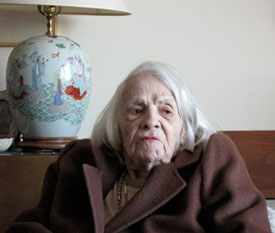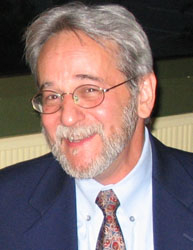When a Rutgers English professor found himself responsible for the care of his 97-year-old aunt, he devised an augmentable branching map that saved his sanity

Aunt Iris was not my favorite aunt, but I got to know her best, and she haunts me most. In her last years, she became increasingly my responsibility.
At first I only needed phone numbers for relatives who visited and talked to Aunt Iris, then social workers, lawyers and grocery stores. The information was in my daybook, or journal, or on post-it notes. Not totally random, but as the number and frequency of connections grew, it threatened chaos.
An augmentable branching map saved me: all the updated vital information and phone numbers on one page folded into my wallet. The complete map displays all segments necessary to make and sustain a huge shift in one person’s life – relatives, grocery stores, social services, Social Security, nursing homes, ambulances, funeral homes, lawyers, banks, doctors, Medicare and doughnut holes, hospice, and cemetery.
Aunt Iris was a refusenik – she would not go to assisted-living when she could. She would have no one living with her. She would have no one cleaning, cooking or, doing laundry. Would not wear a Lifeline. Dropped Meals on Wheels after three days. Refused to acknowledge the police knocking on her door, but was standing there when they knocked it down.
The map displayed everything necessary to make and sustain a huge shift in one person’s life – relatives, grocery stores, social services, Social Security, nursing homes, ambulances, lawyers, banks, doctors, Medicare and doughnut holes, hospice, and cemetery.She met her match in the eldercare matrix, a monster, with branching bureaucracy and a robotic clumsiness injurious to the elderly. The transition from living poorly but autonomously to living communally if not publicly, and on a schedule not her own, would be difficult enough. For Aunt Iris, the transition itself was traumatic: the emergency room and the so-called recuperative unit in a large elder care center in Boston.
When Aunt Iris was 97, a nursing home became necessary. But, you don’t take Aunt Iris anywhere she doesn’t want to go. And, you don’t walk into a nursing home, introduce Aunt Iris and drop her off – they need to know what physical, psychological and behavioral issues are coming with the patient. We were told to go to the ER for an EVAL by a social worker and a medical team. But to do so, Aunt Iris needed to be evaluated by a physician as no longer competent. But she would not make, or go to, or stay through, an appointment. Finally, a doctor who makes house calls ascertains a “failure to thrive.”
Once in the ER, Aunt Iris would be transformed in two hours. We had entered what sociologist Erving Goffman termed a “total institution.” Whoever Aunt Iris had been and howsoever she had lived abruptly ended. We had entered a machine that had people working in it. The need for the “total” makes sense for an army, but not for the elderly and dying, frail and as dependent and vulnerable as children. There’s got to be a more benign system to allow ordinary, if difficult, people to transition and die in their own way. The hospice network should run the nursing homes.
Aunt Iris became a patient in a hospital gown, with the removal of her jewelry, her pride, which had not been unclasped from her body for years. The nurse who did it ogled various pieces, and so helped Aunt Iris tell a little history and allow the jewelry to rest in a plastic bag. This nurse was emblematic of most every person I interacted with. But given pressures beyond them, they did not have all the time in the world. As time went on in the ER, Aunt Iris became impatient, then anxious, and finally combative; she had to be sedated. It was a terrible moment – the end of Iris the Independent.
The ER was followed by three grueling weeks in a “recuperative unit,” which was open – in a corridor – and noisy. Being a “flight risk” Aunt Iris had to have a “watcher” – perfectly aversive for a private woman.
The home, where she was a longtime dedicated volunteer, failed to make good on a promise to find her a space, so after three weeks I brought her from Boston (by ambulance) to New Jersey, 10 minutes away from me. It was a great relief, a nice facility, whose front line people were really good with Aunt Iris.

Ever the bad girl, she rammed people with her wheelchair, scattered other people’s clothing about the ward, poured coffee on a fellow sufferer. But she began subsiding, only cursing, and mostly sleeping. Her mind was reconnecting with her living past--wondering why her mother hadn’t called, or how Ike was doing at home because “he wasn’t very good with money.” She died quietly one night, of old age, 98.
In many ways, Aunt Iris was a savvy woman, perhaps ahead of her time. She had a nursing degree, began as a nurse, and ended up as the director of admissions at the Beth Israel Hospital in Boston. She was twice married and widowed, but did not have any children. She had six nieces and nephews, and was alienated from five – no one would take care of her – she had asked me to be her Power of Attorney and Health Care proxy about a decade before she passed away. Whatever her difficulties, she was generous to the youngest generation of children in the family, leaving 10 with about a year’s tuition. I am sorry the end of life was less generous to Aunt Iris. And praise for all those who daily, bodily, cared for her.
Martin Gliserman is a psychoanalyst and associate professor of English in the School of Arts and Sciences.